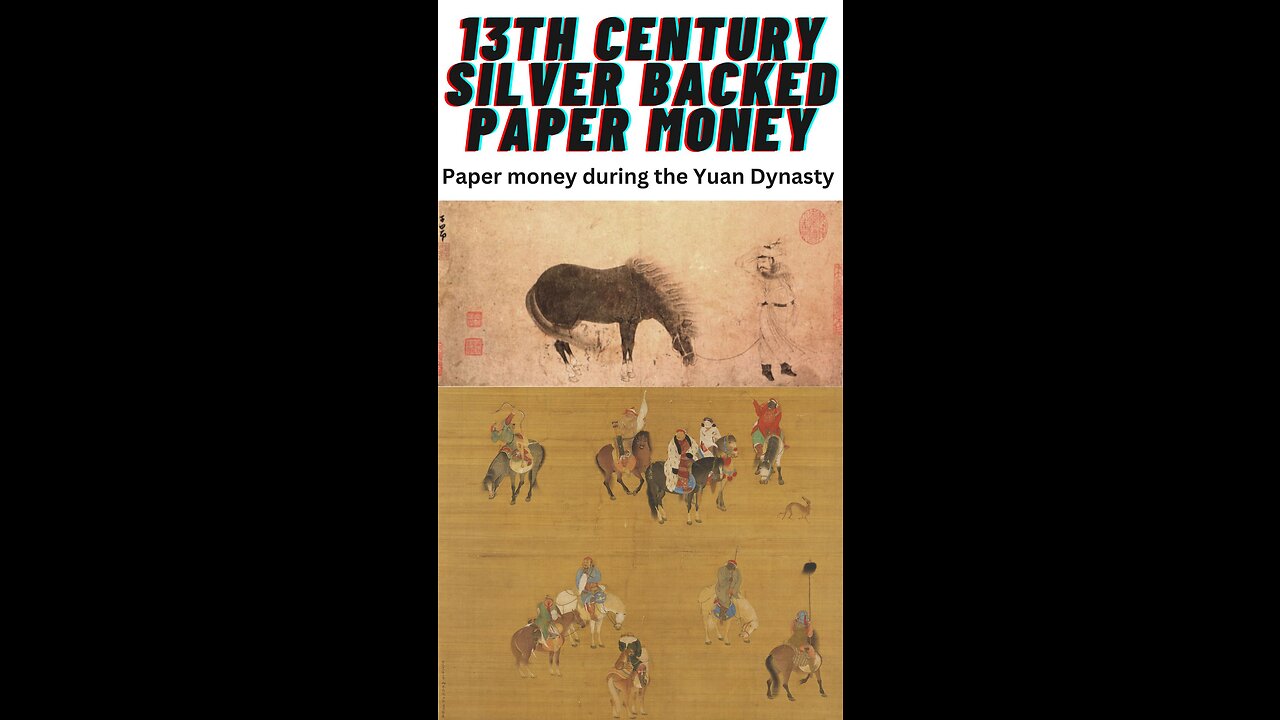Premium Only Content

13th Century Silver Backed Paper Money: Paper money during the Yuan Dynasty
The Yuan empire, established by the Mongols in 1271 by Kublai Khan, was the first regime to peg paper money to precious metal. Although paper money was introduced during the Song Dynasty in the 10th century, it wasn’t until the Yuan Dynasty that paper money became the primary form of currency. The Mongols had a tradition of using silver for exchange. They combined this with the existing paper money in China to create silver-convertible paper money system. China was able to move away from bronze coins into silver-backed paper money.
Despite the importance of this subject, it is often neglected by the public, as well as academics.
By pegging the currency to silver, the money was effectively regulated, and this restricted the Yuan regime financially. Persistent fiscal pressure forced the authorities to ease the monetary standard and move to fiat which led to inflation. Civil wars were the primary cause for over-issuance of currency. Just 16 years after implementing the silver standard, fiscal pressures forced the Yuan Dynasty to abandon the silver standard and the paper money became de facto inconvertible in 1276. With the silver standard abandoned, there was an over issuance of money that led to high inflation. The price level doubled in less than a decade. When the Yuan Dynasty ended in 1368, the paper money was effectively worthless.
Works Cited:
http://hummedia.manchester.ac.uk/schools/soss/economics/discussionpapers/EDP-2207.pdf
-
 2:29:36
2:29:36
Laura Loomer
6 hours agoEP136: YOU'RE FIRED! White House Vetting Crisis Continues
43.1K24 -
 8:07
8:07
MattMorseTV
6 hours ago $3.70 earnedTrump just LOWERED PRICES by 75 PERCENT.
26.5K29 -
 LIVE
LIVE
Misfit Electronic Gaming
9 hours ago $1.65 earned"LIVE" "Blind Descent' +"Dollhouse of Dead" Playtest 10 Followers till we hit 1000! We CAN do this!
498 watching -
 21:53
21:53
Glenn Greenwald
8 hours agoMichael Tracey on the Street: What Do People Think of the Epstein Case?
119K55 -
 2:26:28
2:26:28
megimu32
5 hours agoOTS: Board Games Gone Wild! The Loud, Weird & Chaotic Games That Raised Us
28.3K6 -
 4:25:16
4:25:16
DamnDanieI
5 hours agoKill First, Loot Later – OTG Live
48.1K -
 56:41
56:41
Donald Trump Jr.
10 hours agoLies, Leaks, and Lawfare: Censorship Corruption Exposed | TRIGGERED Ep.263
165K130 -
 1:19:46
1:19:46
Precision Rifle Network
7 hours agoS4E25 Guns & Grub - Rex Is Back, I shot the 6.5PRC finally...
25.1K1 -
 LIVE
LIVE
rhywyn
4 hours agoうつ
43 watching -
 LIVE
LIVE
RyuMuramasa✧
6 hours agoNEW Everdark Sovereign | Elden Ring Nightreign | LIVE Playthrough
36 watching